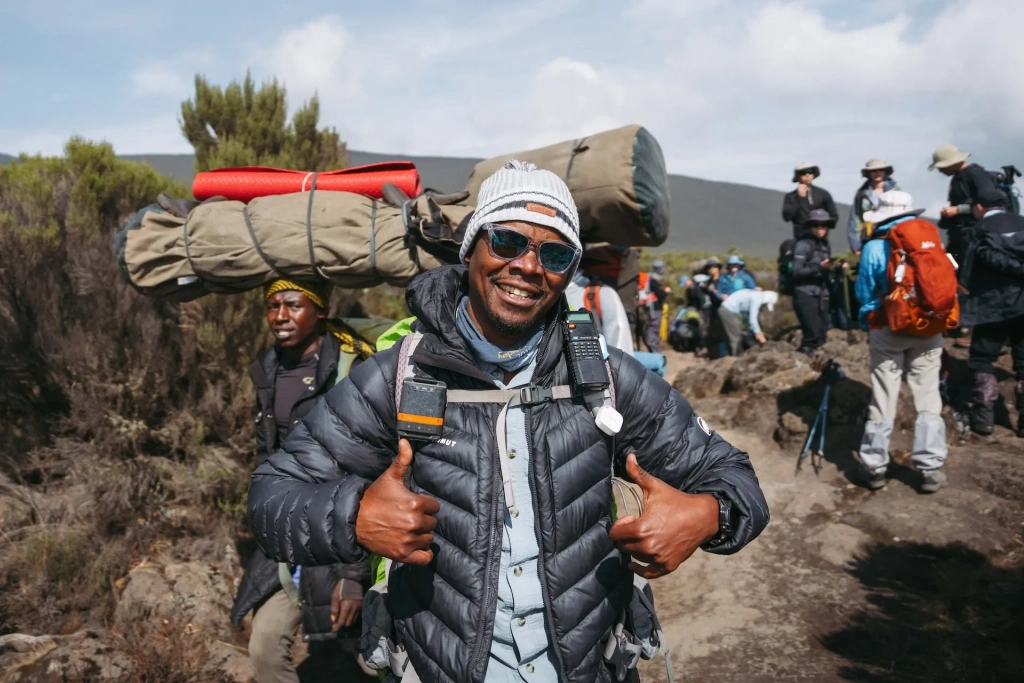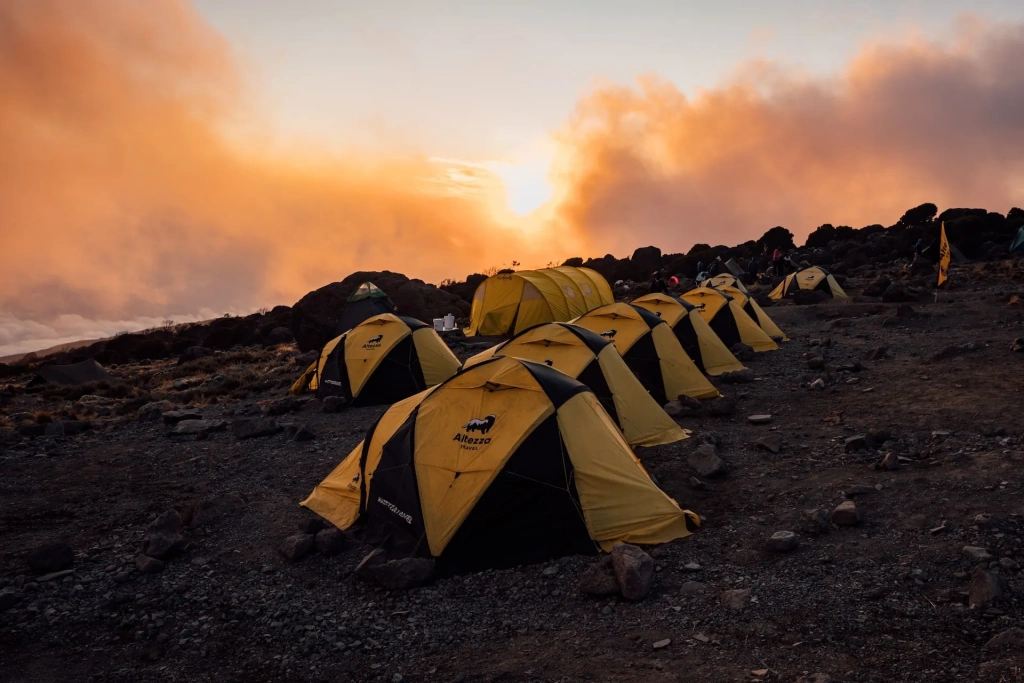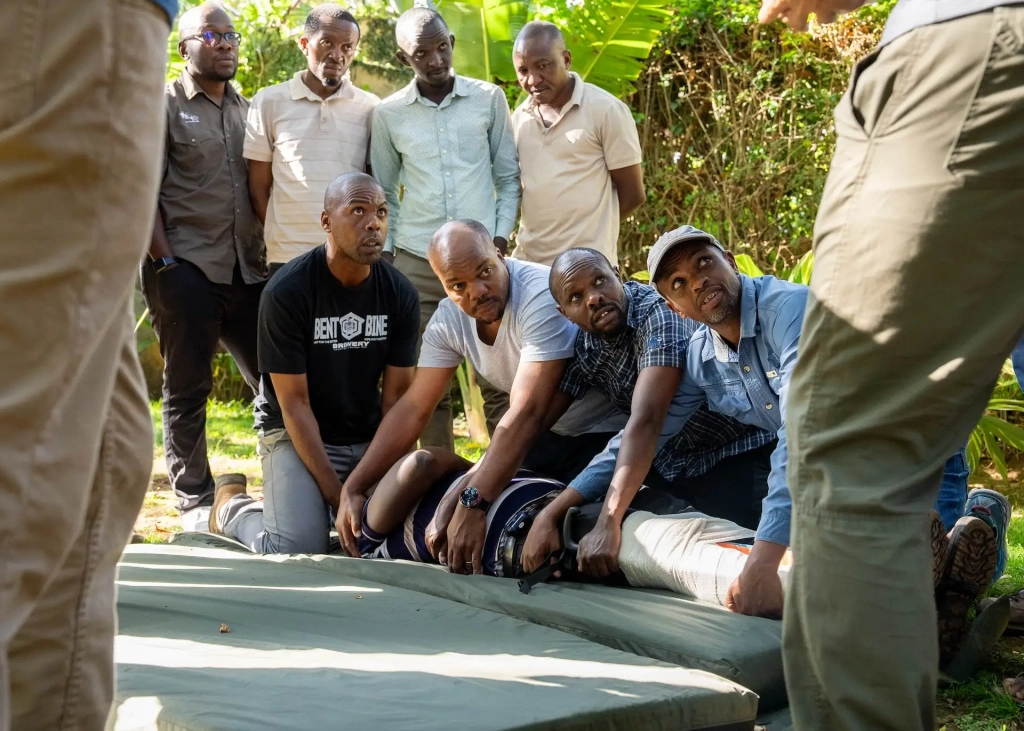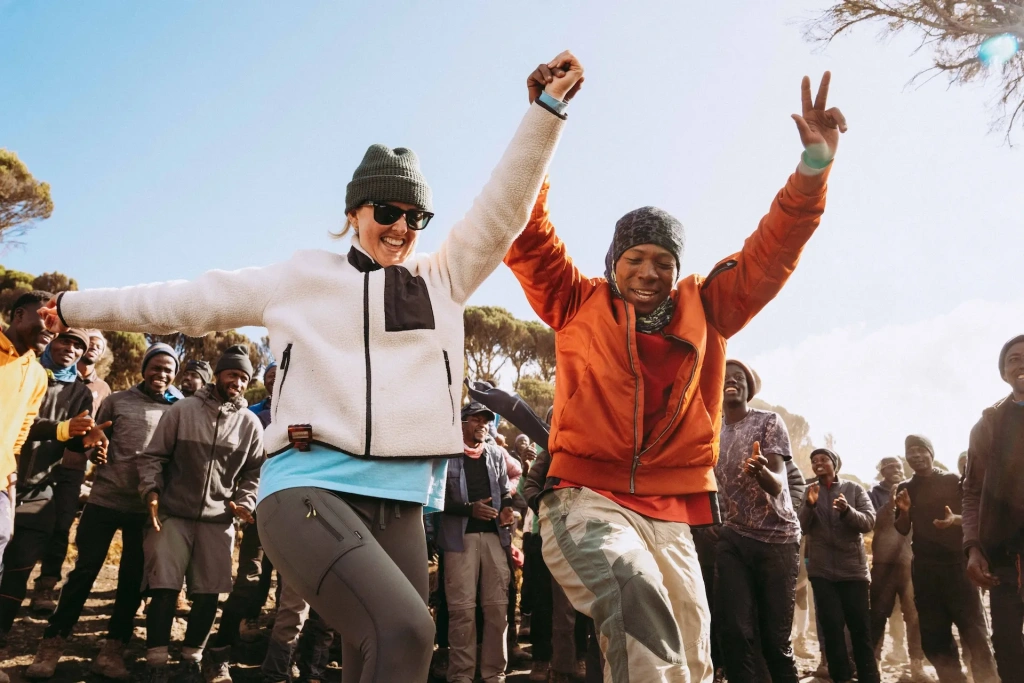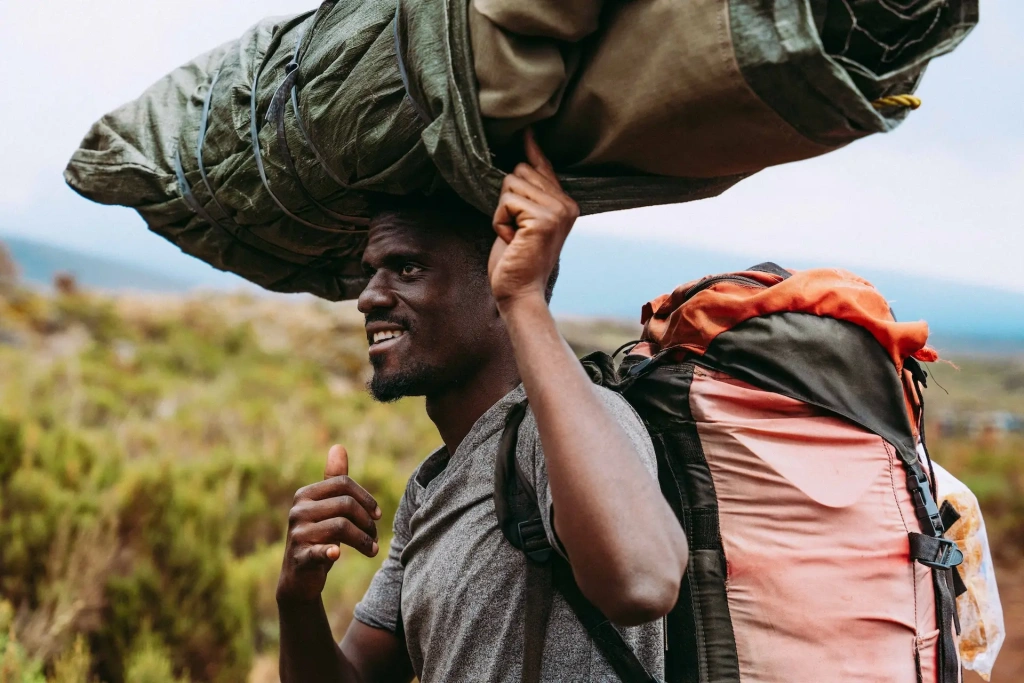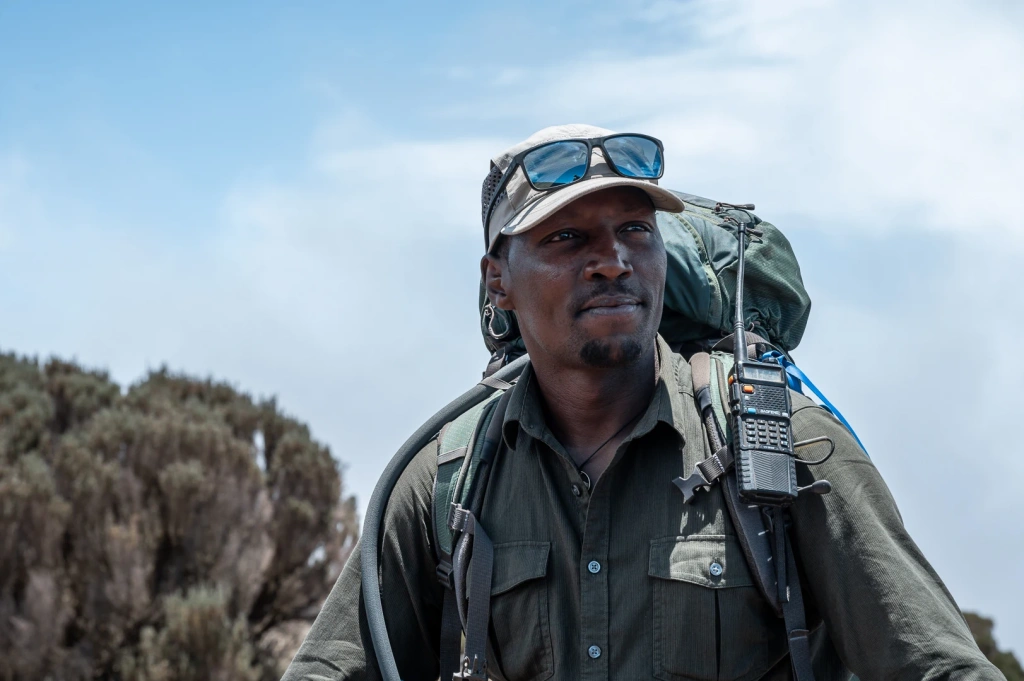Climbing Kilimanjaro without a guide is not possible. The regulations of the Kilimanjaro National Park strictly prohibit it. Beyond this legal requirement, attempting the ascent without a guide would be dangerous and very difficult.
In this article, Altezza Travel explains why the support team is essential for a safe and successful Kilimanjaro expedition.
Why can’t you climb Kilimanjaro solo?
National park regulations
You can only access Kilimanjaro routes with a licensed guide who holds all necessary permits. This rule applies even to experienced climbers. Violations can lead to fines, deportation, or even imprisonment.
If someone tries to sneak past the park’s guarded gates, they will still be discovered as rangers patrol the routes and check permits in camps. It’s also impossible to stay outside the designated camps: as soon as any passing guide spots such a traveler, they report it to the ranger service.
Safety
The ascent to Uhuru Peak, the highest point of the volcano (5,895 meters / 19,341 feet), is mostly gentle and doesn’t require technical mountaineering skills. The main challenges are acclimatization to altitude and prolonged physical exertion. That’s why good fitness and continuous health monitoring are essential.
Climbers, and especially beginners, often fail to recognize the symptoms of altitude sickness, severe forms of which can lead to pulmonary or cerebral edema. The most demanding part is the night summit push: the cold, wind, and thin air make the final stretch extremely tough.
That’s why a professional guide plays a crucial role at every stage of the climb, monitoring each participant’s condition. Twice a day, guides perform medical checkups, measure blood oxygen levels, and fill out medical cards. This helps track each climber’s health and respond quickly to any changes.
If necessary, the guide will adjust the pace, provide medication, or offer bottled oxygen to relieve altitude symptoms. If a climber’s condition does not improve, the head guide has the authority to halt the ascent for any climber showing concerning symptoms, without needing approval from the tour operator or the climber. Kilimanjaro National Park grants this authority, as the guide bears legal responsibility for the climber’s safety.
When it’s necessary to turn back, there are two options:
- Descent. The climber is accompanied by assistant guides to the park gates, where an Altezza Travel driver will meet them and take them to the hotel.
- Evacuation. If descent is not feasible, evacuation is done either by vehicle from lower camps or by helicopter from higher altitudes. This requires knowledge of helipad locations and key points, which is another reason why climbing without a guide is unsafe.
We always inform our clients that the head guide can make such a decision if deemed necessary. Safety is our top priority on every expedition.
So, the answer to the question “Can you hike Kilimanjaro without a guide?” remains the same: no, not without breaking the law and putting your health at a very serious risk.
Comfort and organization
Climbing Kilimanjaro isn’t just about long daily treks and stunning views. An expedition with a guide is also an educational journey. Along the way, the guide shares fascinating facts about Kilimanjaro, its animals and plants, and the traditions of the tribes that have lived at its base for centuries.
The mountain team includes assistant guides, porters, cooks, and tent setup specialists (“camp masters”), all coordinated by the lead guide. He is responsible for the equipment, food, tents, medication, and full compliance with Altezza Travel’s protocols. With such thorough organization, the climb runs smoothly, travelers feel safe, and they can focus on the once-in-a-lifetime experience of climbing the “Roof of Africa”.
Ecology and contribution to the region
In addition to taking care of climbers, guides alongside park rangers are tasked with protecting Kilimanjaro’s ecosystem. Tens of thousands of travelers visit the mountain every year, and this number keeps growing. In 2024, more than 57,000 climbers visited the park. In 2025, the number will exceed 60,000. Guides help keep trails clean and orderly, ensure groups stay on authorized routes, avoid harming wildlife and plants, don’t light fires, and don’t leave trash.
Beyond safety and comfort, local support teams also play a vital role in the community. Their work provides stable employment for Tanzanian residents and supports thousands of families who depend on tourism for their livelihoods. Partnering with a reliable tour operator ensures steady income and decent living conditions for thousands of people across the region.
Climbing Kilimanjaro is expensive. How to save money?
The cost of climbing includes meals, insurance, and support team services, but a significant portion goes to park fees. The total cost averages between $2,500 and $3,000, and with an international flight, around $4,500. Naturally, many travelers want to save money. Here’s how to do it without compromising on your safety:
Choose cheaper flights
- Use flight aggregators to compare prices.
Select several suitable routes and enable price alerts, as fares can sometimes drop significantly, and you don’t want to miss the moment. Keep in mind, though, that such drops often occur shortly before the departure date. These price changes are impossible to predict, so it’s not wise to rely on them entirely.
- Check airline websites directly.
Several major carriers fly to Kilimanjaro, including Qatar Airways, Turkish Airlines, Ethiopian Airlines, and KLM Royal Dutch Airlines. Their official websites often list lower fares than those found on aggregator platforms.
- Consider flying to Nairobi (Kenya) and traveling to Moshi (Tanzania) by bus.
Recently, an additional airport fee of USD 90 has been introduced in all Tanzanian airports, adding to the already high charges at Kilimanjaro Airport. A more budget-friendly alternative may be to take an international bus from Nairobi, with tickets starting at around USD 30 one way. However, note that the trip takes at least six hours, and a transit visa is required when crossing the Kenyan border.
- Take seasonality into account.
Spring is Tanzania’s rainy season, when tour prices drop and there are noticeably fewer climbers on the mountain, especially from mid-April to early May. Another rainy period occurs toward the end of the year, in November and December. However, during the Christmas holidays, Kilimanjaro attracts many travelers, and prices tend to rise accordingly.
Choose a cheaper operator, but one that’s a KPAP member.
Another way to save money is by choosing a budget tour operator. Such companies usually offer basic packages that include a limited number of guides and porters, sometimes older tents, and simpler meals.
However, it’s critical that your operator is a member of KPAP (Kilimanjaro Porters Assistance Project), which protects porters’ rights. This ensures that all support team members are officially employed, follow safety standards, and receive fair wages.
Climbing with freelance guides is unsafe
Sometimes climbers try to find private guides offering to reach the summit with little or no support team at a lower price. Such offers involve significant risk.
The main reason is poor preparation. Such guides usually lack oxygen cylinders, first aid kits, radios, satellite phones, and other essential gear. Many have never undergone formal training and don’t know how to respond in emergencies. Moreover, cost-cutting affects the entire team: fewer people, lower food quality, and underpaid staff.
Such expeditions are unethical and endanger everyone involved. We talk about this in detail in our article “How to climb Kilimanjaro without exploiting porters.”
The only safe option is to book with a licensed tour operator. At Altezza Travel, only professional, experienced guides lead our climbs. Over the past 10 years, we have organized more than 3,500 expeditions for over 20,000 travelers. Our guides are not only trained to handle emergencies but also know how to prevent them from happening in the first place.
All content on Altezza Travel is created with expert insights and thorough research, in line with our Editorial Policy.
Want to know more about Tanzania adventures?
Get in touch with our team! We've explored all the top destinations across Tanzania. Our Kilimanjaro-based adventure consultants are ready to share tips and help you plan your unforgettable journey.















